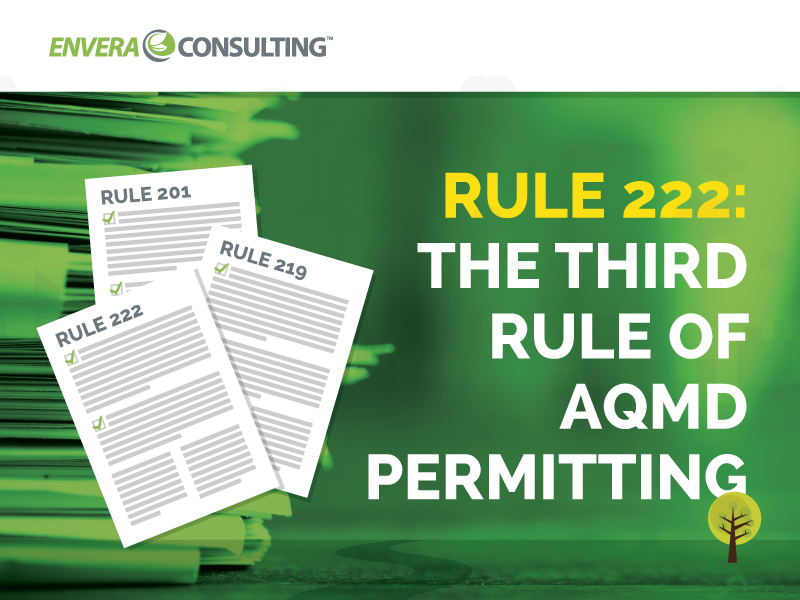

When it comes to the South Coast Air Quality Management District (SCAQMD) permitting process, the most common question we get asked is whether a certain piece of equipment requires a permit.
The answer isn’t always a simple yes or no.
When determining whether a piece of equipment needs a permit, you need to refer to what we like to call the “trio of permit-applicability rules.” Most equipment will fall under one of the first two rules: Rule 201, which tells you what types of equipment need to be permitted, or Rule 219, which states which types are exempt from the permitting process.
The final member of the trio is Rule 222.
Although equipment subject to this rule does not need a “regular” permit (which requires far more paperwork and expense), it is not entirely exempt either.
Rule 222 Basics
Rule 222 was adopted in 1998, in response to the Air Pollution Control Permit Streamlining Act of 1992, which requires “[air] districts to review their permit programs and to institute new, efficient procedures which will assist businesses in complying with regional, state, and federal air quality laws in an expedited fashion, without reducing protection of public health and the environment.”
In order to meet the requirements of the permit streamlining act, Rule 222 was started as a pilot program meant to ease the permitting burden on operators of small emission sources by removing SCAQMD permitting requirements for equipment that has low emissions, creating straightforward compliance conditions and recordkeeping guidelines, and setting a minimal risk of emitting air toxins.
In 1998, only two sources of equipment were included in Rule 222’s exclusion list: charbroilers and negative air machines used in asbestos abatement. Today, the rule has expanded to include 23 different types of equipment, including:
- Certain boilers, steam generators, and/or process heaters with a rated heat-input capacity of 1,000,000 to 2,000,000 BTU/hr and which have emissions of less than one pound of nitrogen oxide (NOx) per day
- Commercial charbroilers and associated air-pollution control equipment
- Asphalt pavement heaters used for new road construction and maintenance
Registering Equipment Under Rule 222
- A description of the source
- Data needed to estimate emissions from the equipment
- Information needed to determine if the equipment is operating in compliance with all applicable rules
In terms of fees, the Rule 222 program also requires applicants to submit an initial filing fee (currently a mere $198.13, compared to the thousands of dollars required for a “full” permit), as well as an annual renewal fee of the same amount.
Most people approach the permitting process in a simple yes-or-no manner, trying to determine whether a piece of equipment needs a permit. However, to have a fuller understanding of the SCAQMD permitting process, you also need to ask yourself if a piece of equipment instead requires registration under Rule 222.
Need help determining whether your equipment needs a permit? Contact us and we’ll guide you through the process.